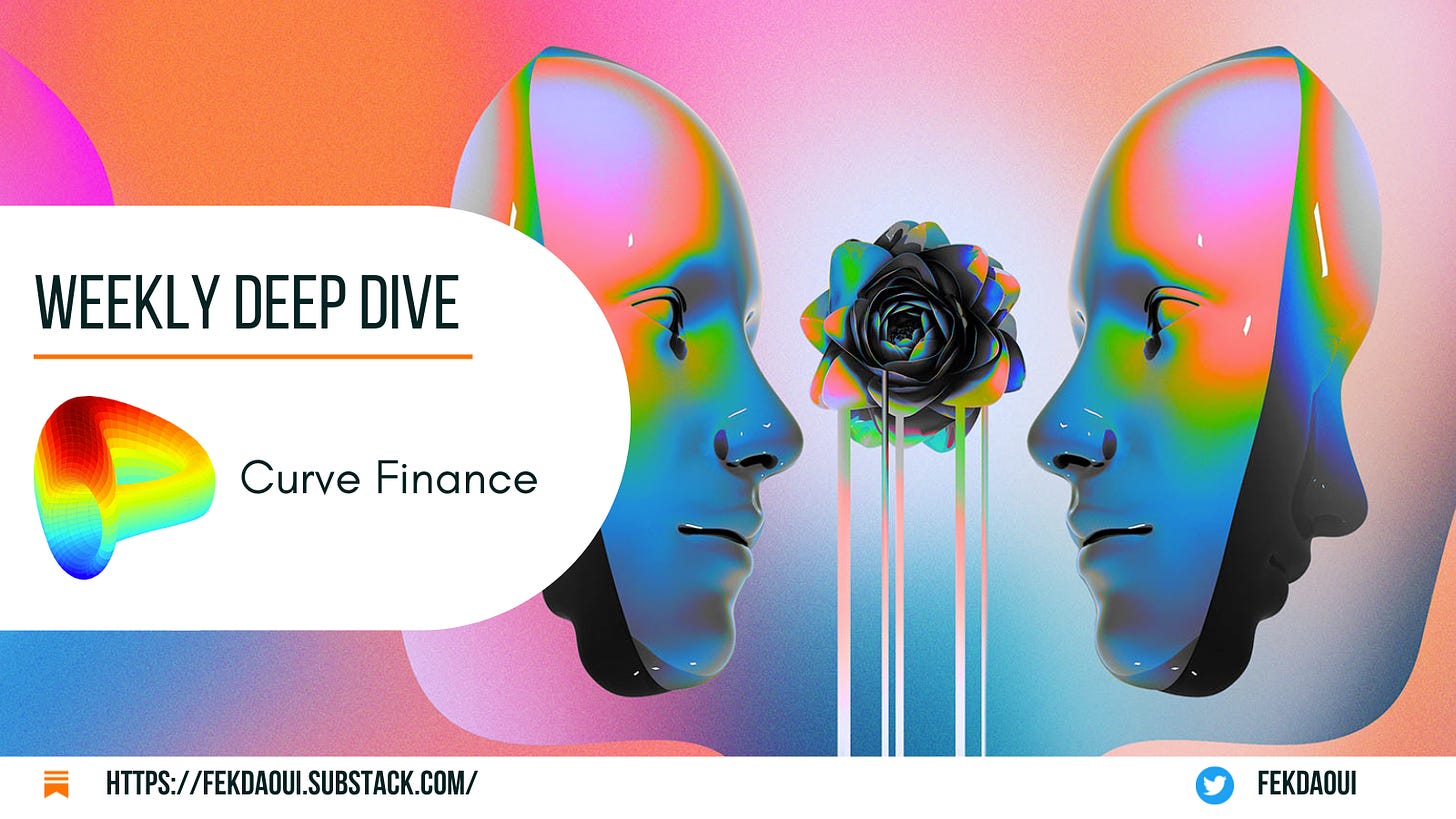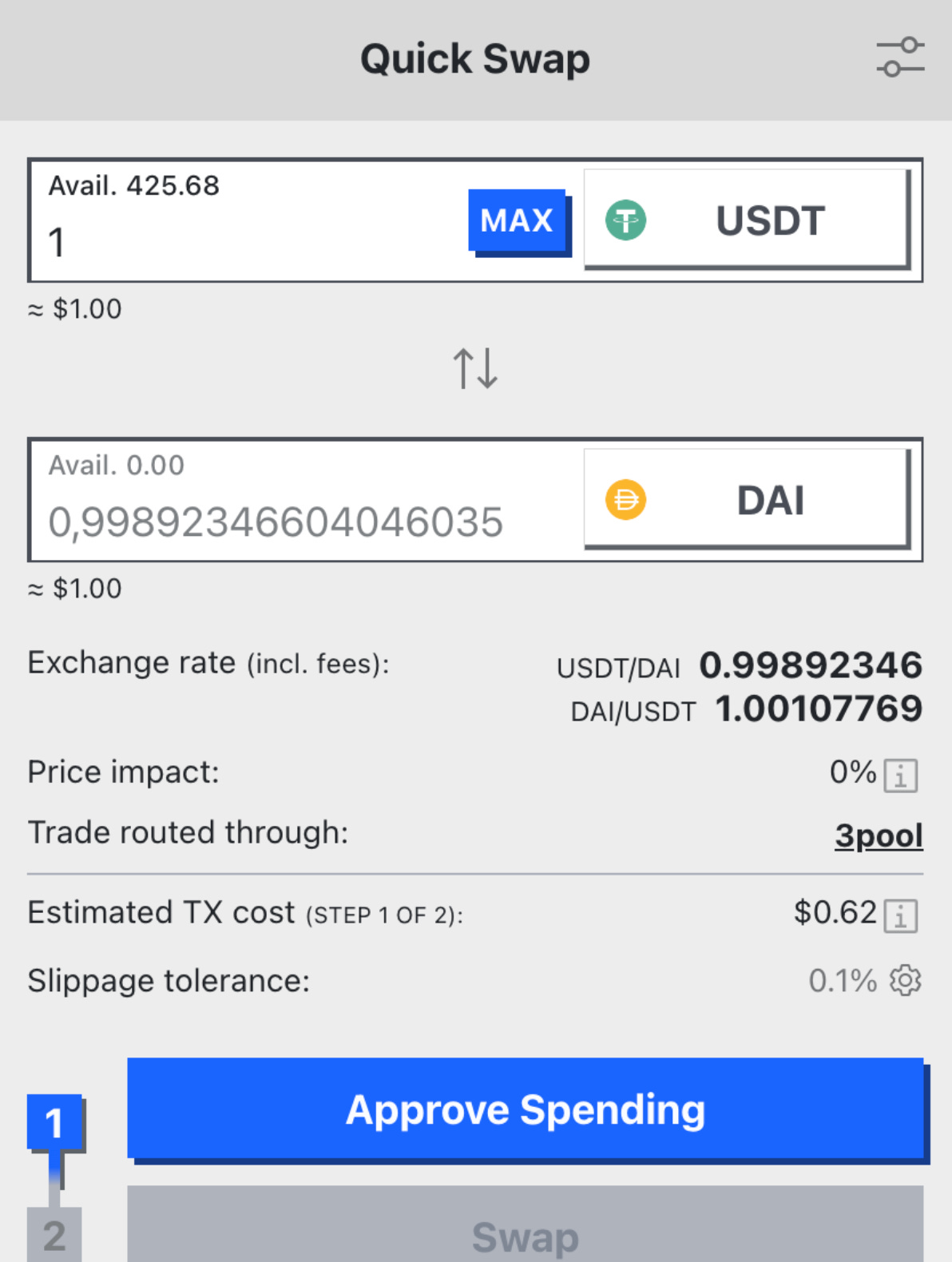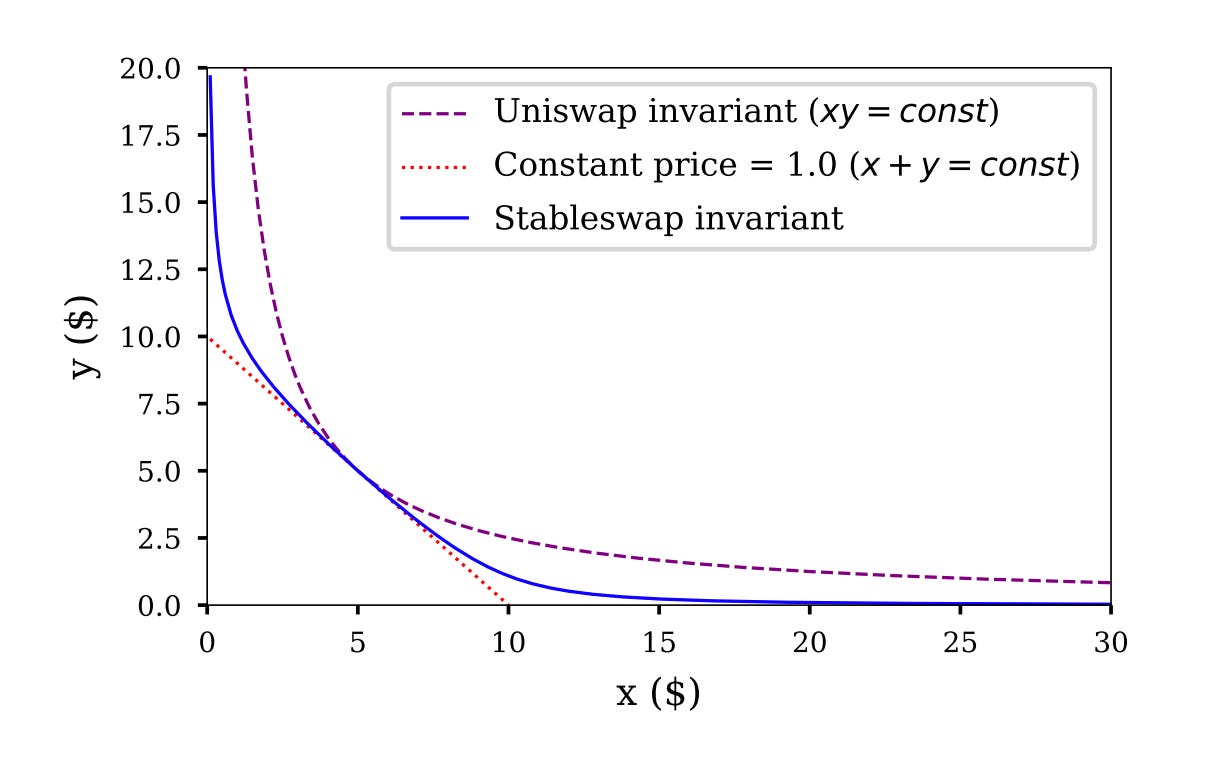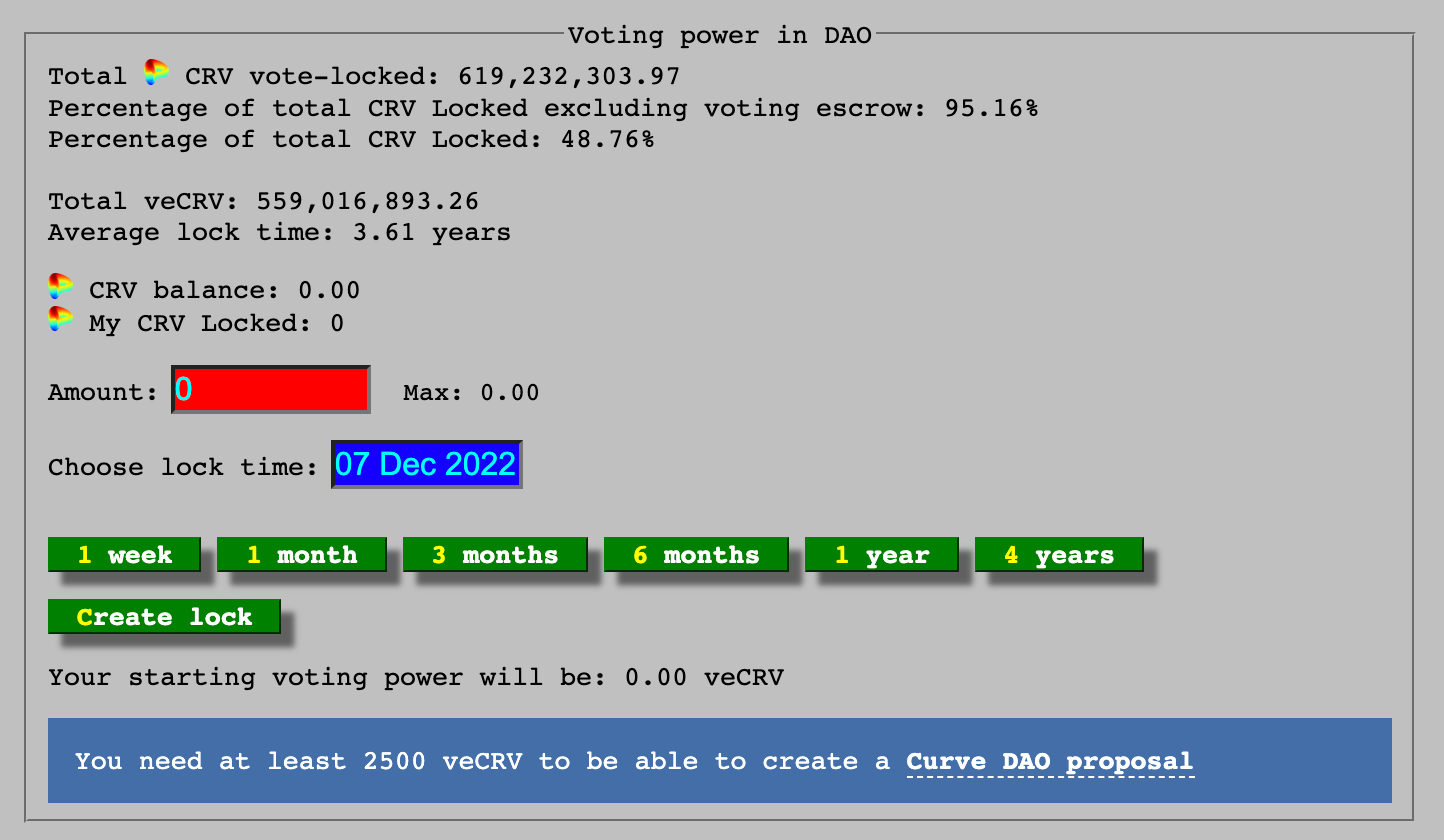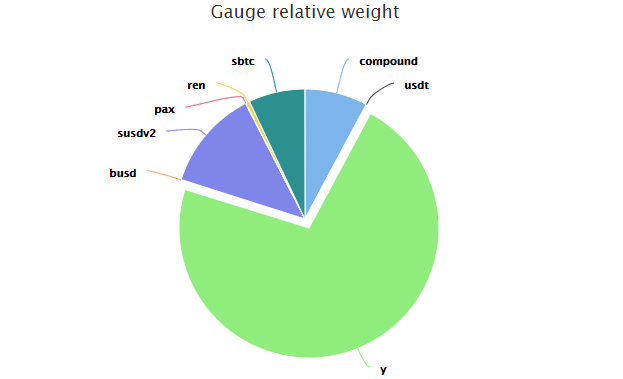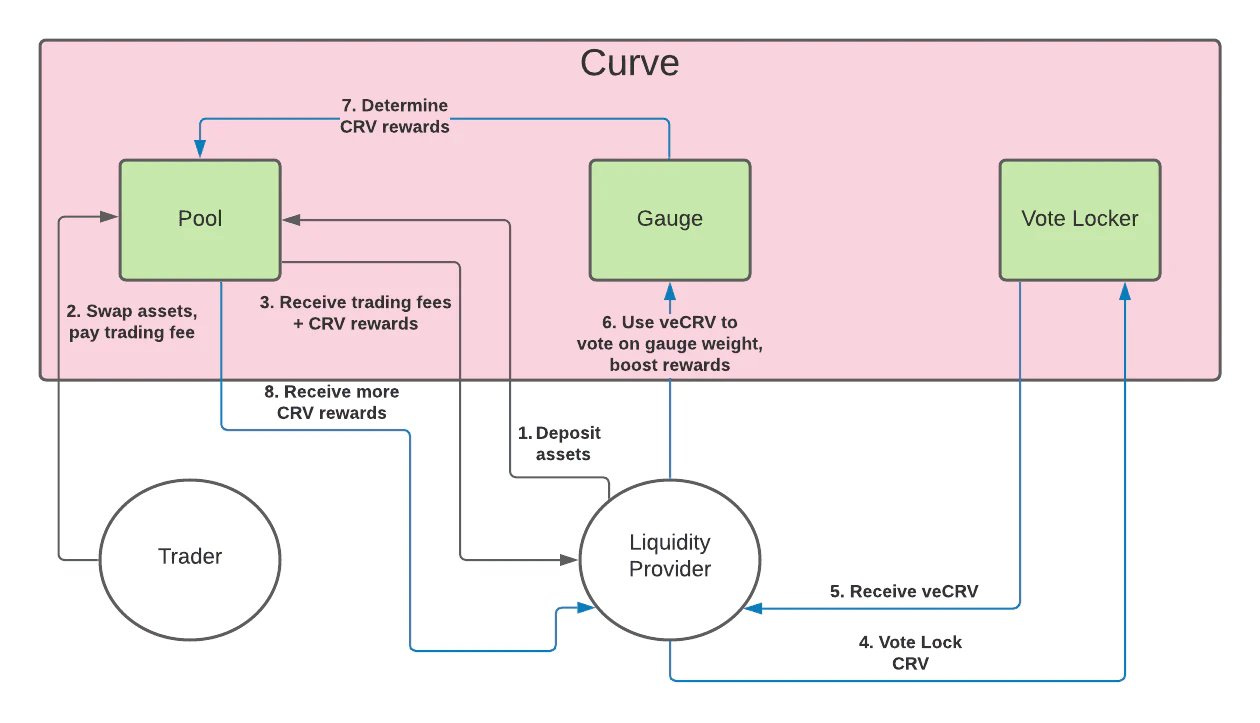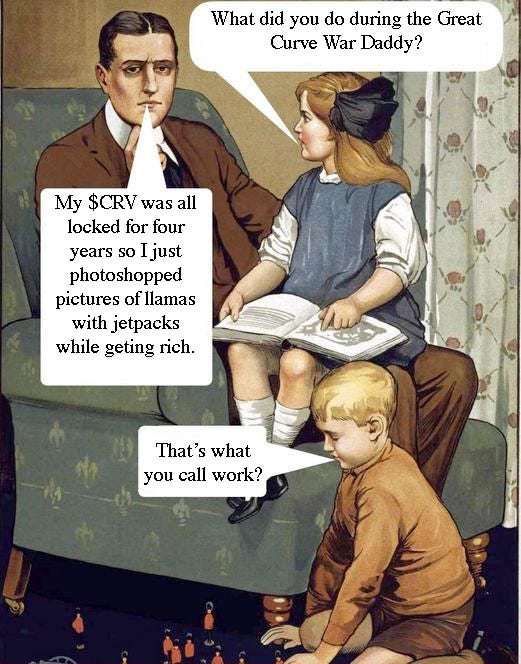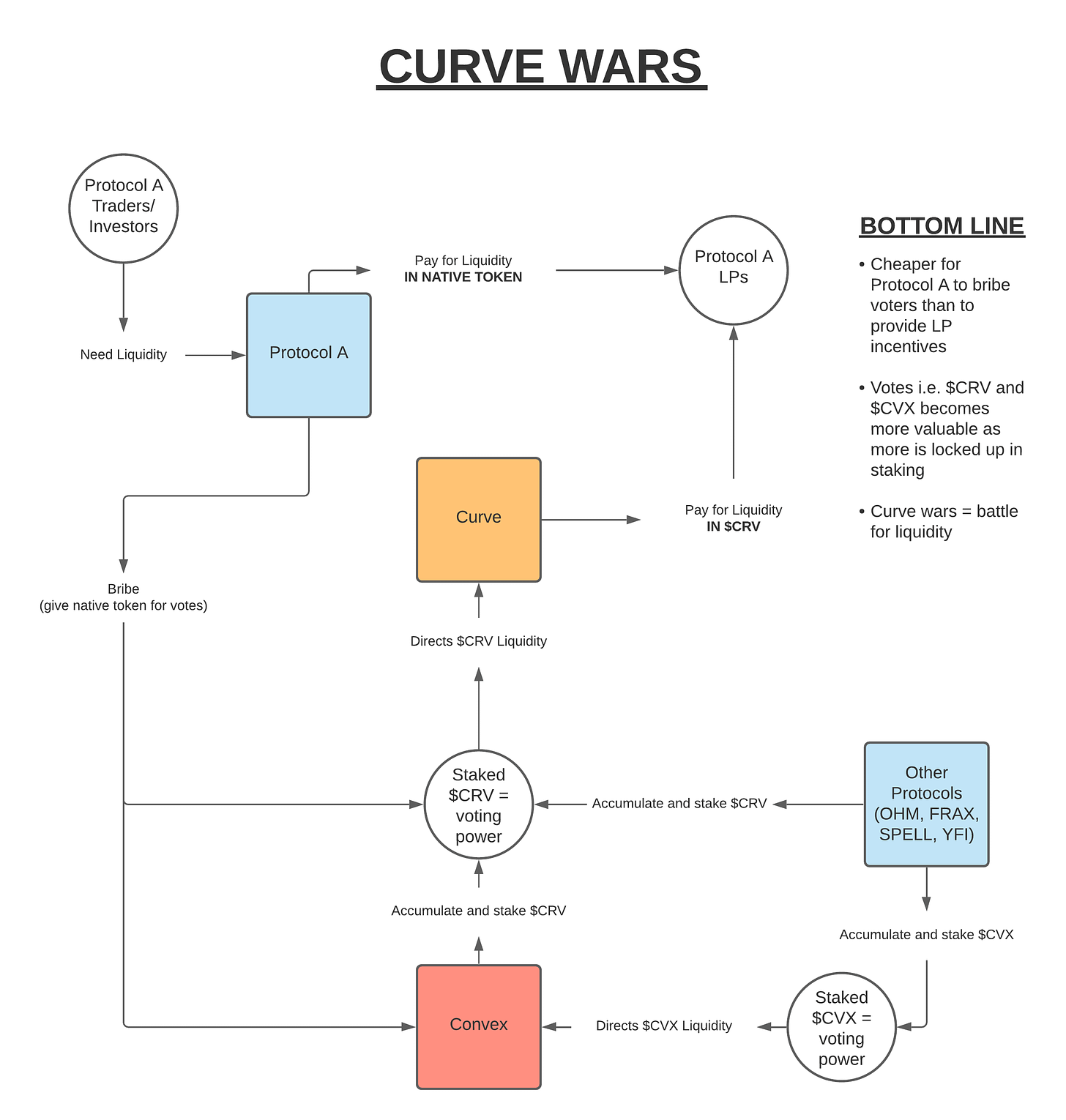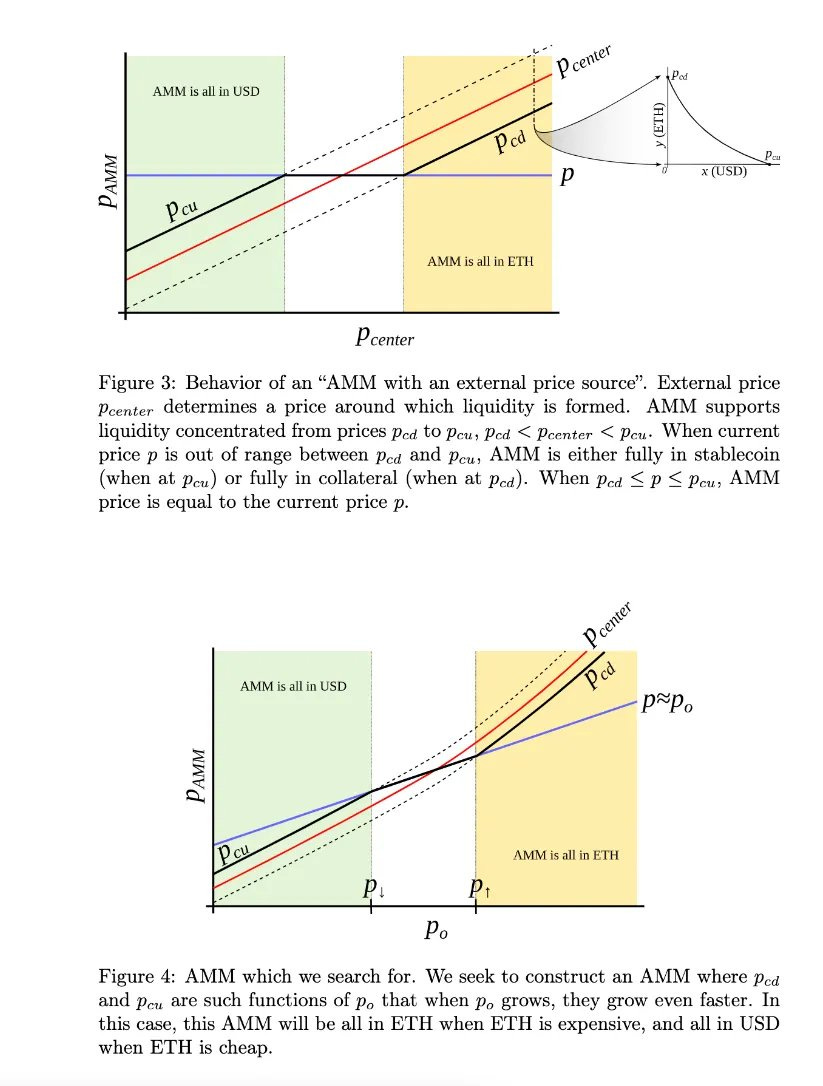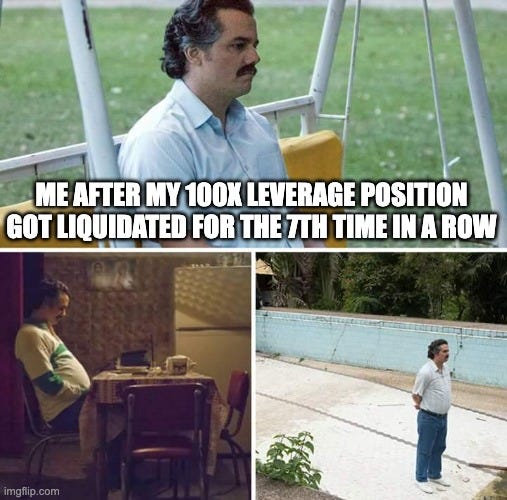Last week Curve Finance published the GitHub repository for $crvUSD, their new stablecoin. What is Curve Finance and why is this an important event? That is what I will cover in this piece.
I will go into what Curve Finance is, how it works, what the Curve Wars are and how this new stablecoin will impact the overall ecosystem.


If you are looking to quickly get up to speed on DeFi terminology, you can click here for a DeFi glossary.
ARTICLE OUTLINE
What is Curve Finance
The curve ecosystem ($CRV/$veCRV & workings)
The Great Curve Wars
$crvUSD stablecoin
What is Curve Finance
In a nutshell, Curve Finance is a decentralized exchange: it is a protocol that allows you to swap multiple tokens without the involvement of a third party.
In Curve’s own words:
The easiest way to understand Curve is to see it as an exchange. Its main goal is to let users and other decentralised protocols exchange ERC-20 tokens (DAI to USDC for example) through it with low fees and low slippage. Unlike exchanges that match a buyer and a seller, Curve uses liquidity pools. To achieve successful exchange volume, Curve needs a high volume of liquidity (tokens) and therefore offers rewards to liquidity providers.
It is one of the most important protocols in Decentralized Finance being the #1 DEX in DeFi at the time of writing. During last bull market it accumulated more than $24 billion dollars in TVL (total value locked) at its peak.
The Curve ecosystem
Now, what makes Curve Finance and its token ($CRV) so special? In my opinion, there are two major components:
A special AMM (Automated Market Maker - it uses the StableSwap invariant model) that allows for low-slippage exchange of tokens. This made it especially attractive to swap stablecoins.
Slippage is basically the price of your asset changing as a result of your trade. This is highly influenced by the amount of liquidity there is - the more liquidity in the liquidity pool the better (lower slippage). Especially for stablecoins, liquidity & low-slippage is extremely important as they need to hold a constant $1 price. Obviously, you would not want a stablecoin that is not stable.
The Stableswap invariant AMM model plays a key role in making sure that slippage is minimized during trades. As you can see from the graph above, the Stableswap invariant is much closer to the constant price (which represents a situation where there would be no slippage at all).
A vote-locking model that allows users to vote on future token emissions. Users can lock $CRV and receive $veCRV (voting escrow) instead. The token can be locked for a period of 1 to 4 years at a 0.25 to 1 conversion rate.
The interesting thing here is the following: $veCRV is used to vote and decide which LP (liquidity pools) receive more daily $CRV emissions. This is why multiple DeFi protocols are trying to stack as much CRV as possible so they can vote to increase the amount of $CRV emissions that are distributed to their liquidity pools.
In the Curve Finance ecosystem, the inflation is going to users who provide liquidity & this is where gauges and gauge weight come in:
The liquidity gauge measures how much a user is providing in liquidity.
A gauge weight translates into how much of the daily CRV inflation it receives. Gauge weights are important because those weights decide where the CRV inflation goes: it controls where most of the liquidity goes & is decided upon by the voters of the DAO. In the example below we can see that liquidity providers in pool Y receive around 72% of the daily $CRV emissions.
Vote locking might be the major driver for Curve’s success as it aligns token holder incentives with Curve’s incentives:
From Curve’s perspective, having tokens locked for a long period of time means those tokens are out of the circulating supply: lower supply → higher price and higher market cap.
From the token holders perspective, they benefit by sharing in the trading fees generated on CRV. Since September 2020, 50% of all trading fees on Curve are distributed to $veCRV holders. On top of these trading fees, liquidity providers earn $CRV rewards as mentioned above.
The Great Curve Wars
OK, that is cool and all - but what is this thing about the Curve Wars and why are protocols trying to accumulate as much CRV as possible?
This vote-locking model that allows you to decide where the $CRV emissions will flow is a game-changer when it comes to incentivizing liquidity. What this basically means is that DeFi protocols, instead of inflating their token to incentivize liquidity, are now able to incentivize liquidity at a cheaper cost by making use of the $CRV token.
All of a sudden, the votes themselves become valuable as they decide which pools receive a higher portion of the $CRV emissions. This eventually led to multiple protocols starting to offer $CRV holders bribes if they would vote in their interest, as this would come out cheaper for them than incentivizing liquidity by issuing their own tokens.
And that is what the Curve Wars are all about: protocols seeking cheap liquidity, trying to stack as much $veCRV/$CRV as possible so they can redirect $CRV rewards to their own liquidity pool. It’s the ultimate battle for liquidity.
$crvUSD
Good, now that you got the basics around the Curve ecosystem, we can move on to discuss the latest developments within the ecosystem.
Allright - what is this stablecoin hype all about? It seems like every other week another protocol is launching its own stablecoin, so what distinguishes this one from all the others?
What makes $crvUSD so special is its LLAMMA model (Lending-Liquidating AMM Algorithm).
On most lending platforms, when the price of a token drops, the health of the loan declines rapidly and ends up being liquidated. Not the best experience of course. Nobody likes waking up to his position having been liquidated, checking the price and seeing it is back up above liquidation price.
The LLAMMA model has a completely new approach to mitigate this problem.
Instead of liquidating everything instantly, it liquidates you bit by bit (in bands) as your loan collateral drops. For example, let’s say you take out a loan using 1 ETH with a liquidation range between $2000 and $2050. The liquidation ranges could look like this:
$2000 - $2010: 0.2 ETH
$2010 - $2020: 0.2 ETH
$2020 - $2030: 0.2 ETH
$2030 - $2040: 0.2 ETH
$2040 - $2050: 0.2 ETH
Once the price drops to the $2040-$2050 range, your position begins to liquidate:
Price of collateral goes down: LLAMMA automatically liquidates part of your portfolio into $crvUSD.
Price of collateral goes back up: LLAMMA repurchases your collateral.
Instead of liquidating your entire position all at once, the process occurs smoothly over a continuous range, which severely limits your potential losses. This is quite different from the typical experience you would have today:
Price of collateral goes down: your collateral gets sold
Price of collateral goes back up: you are left holding USD and need to buy back higher
What are the implications for $CRV?
In my opinion there are two possible implications:
The $CRV token might generate more fees and thus more money for $CRV lockers:
$crvUSD borrowing fee
increased trading volume due to LLAMMA
increase of overall volume flowing through Curve Ecosystem as more $crvUSD trading pairs are added
More governance utility for $veCRV as the DAO will have control over the $crvUSD ecosystem.
Wrapping it all up
Overall I believe $crvUSD will be a valuable addition to the Curve ecosystem & it will be interesting to see how it plays out long term. Thank you for reading and I hope I managed to describe things in a clear and understandable way.
See you all on Sunday for This Week in Crypto!




